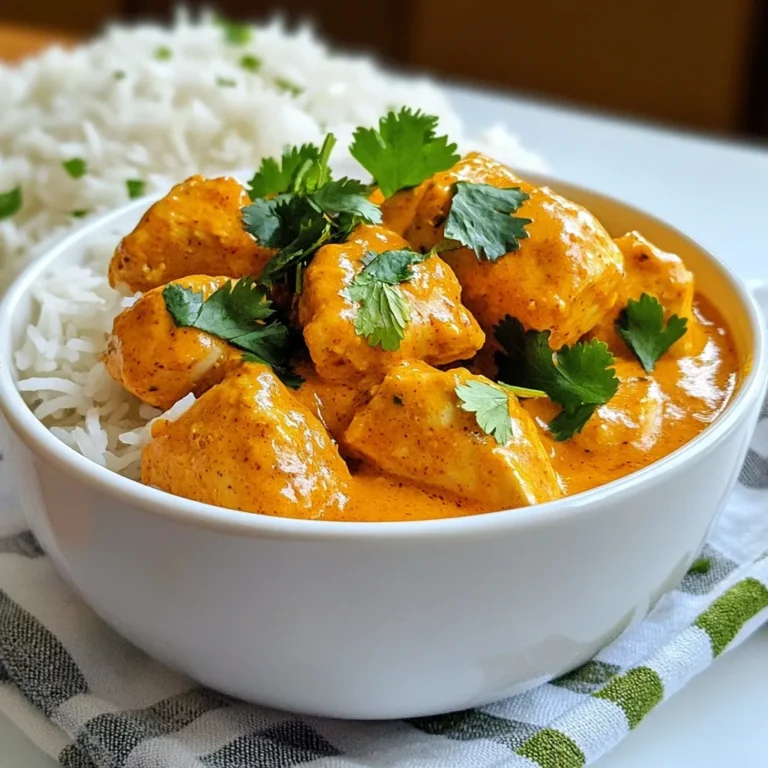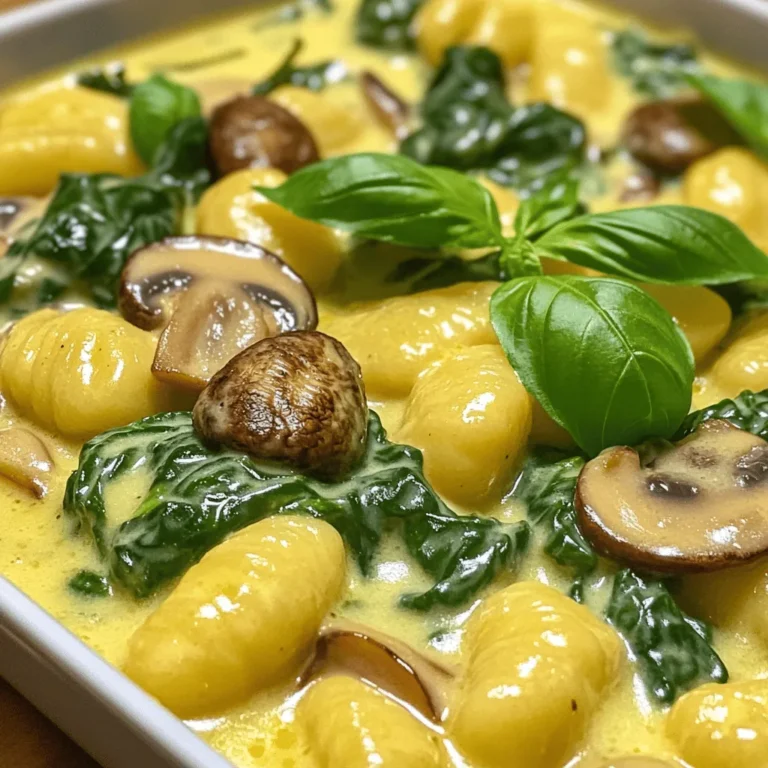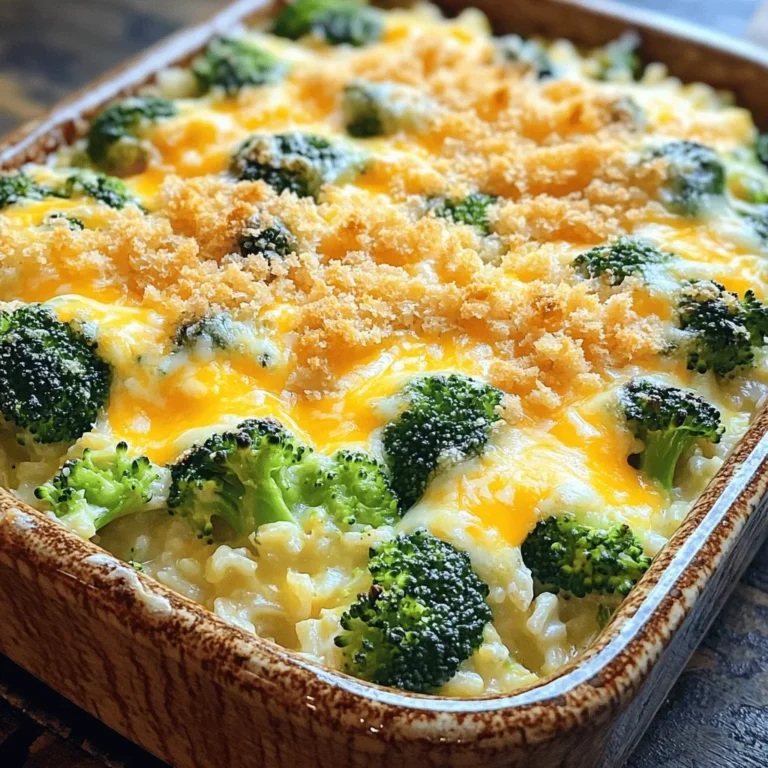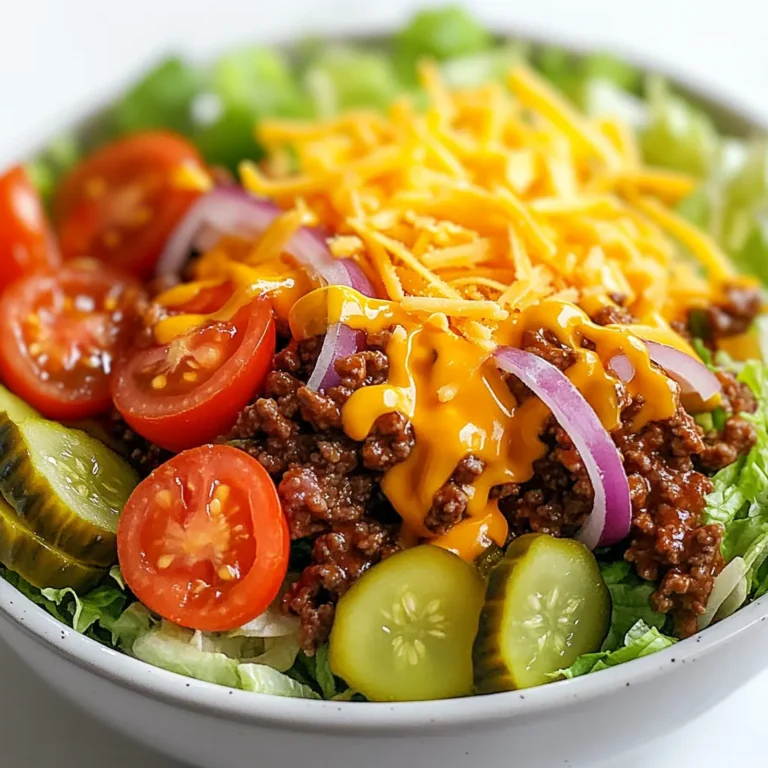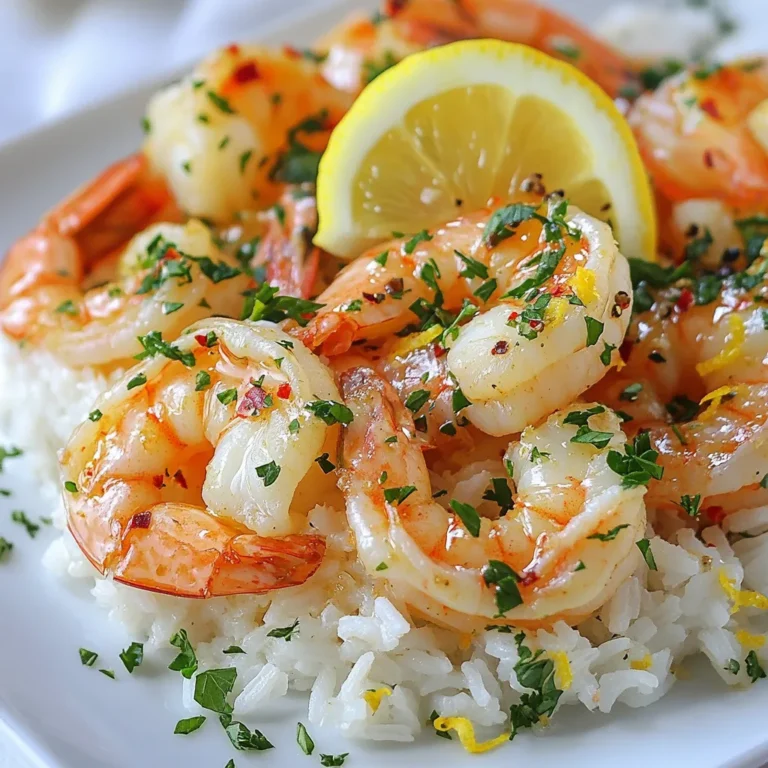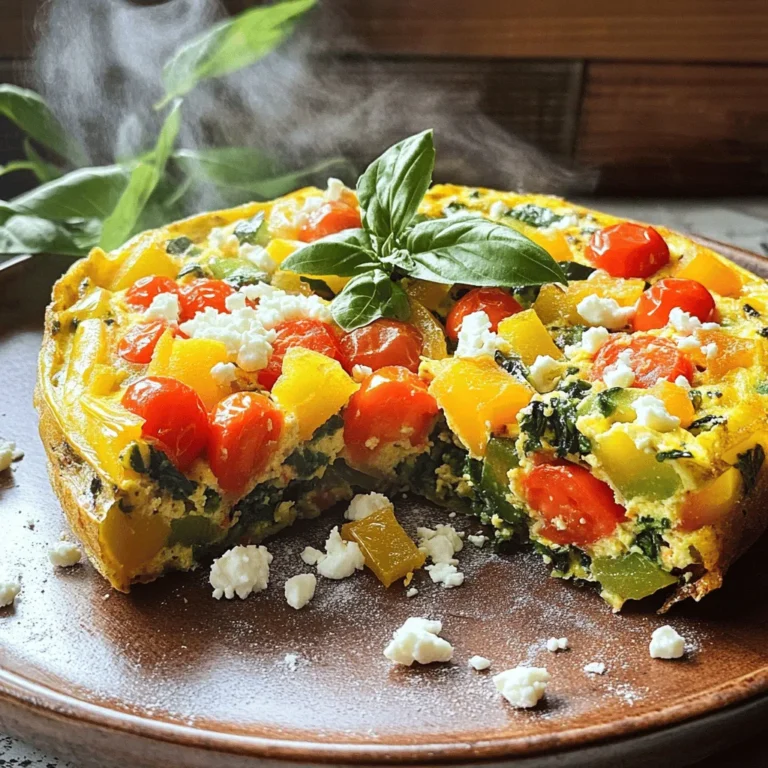Authentic Cajun Jambalaya Flavorful and Simple Recipe
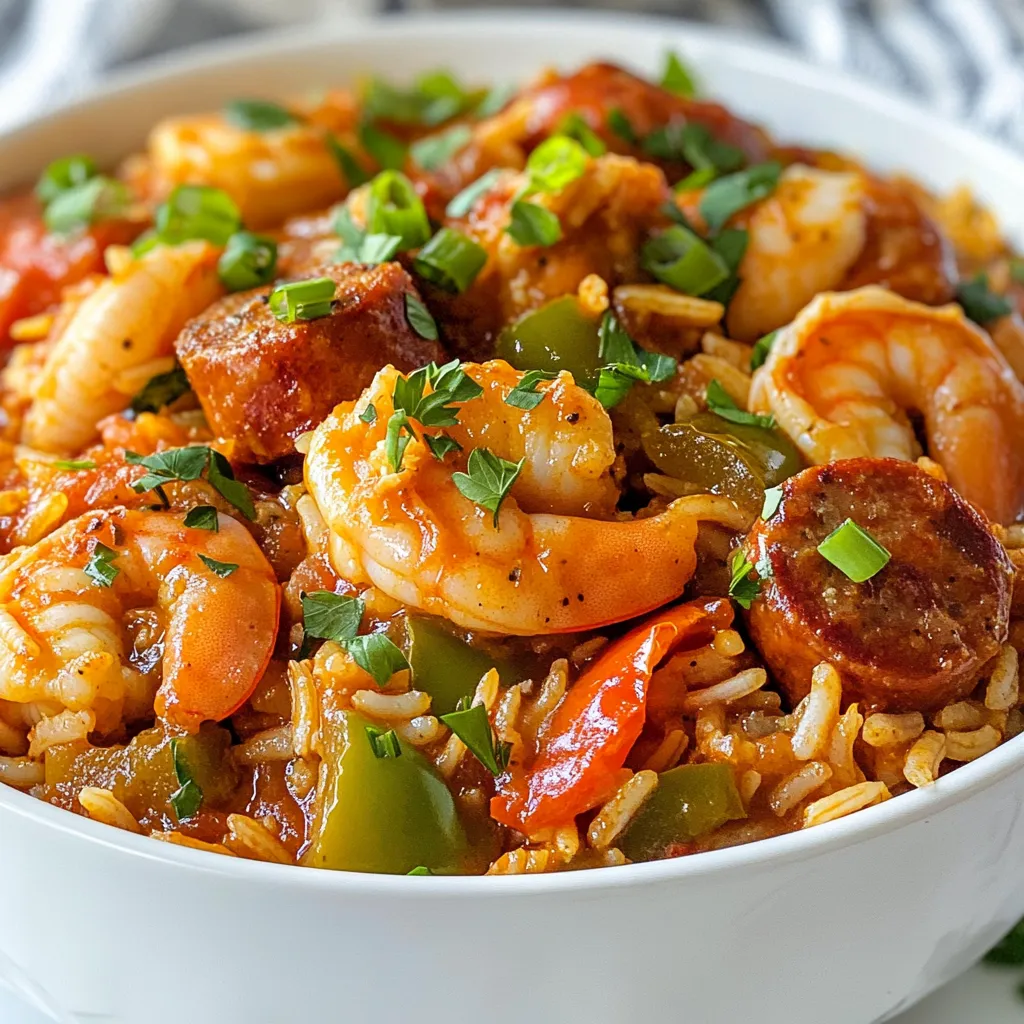
Ready to make your kitchen sizzle with a taste of Louisiana? In this post, I’ll show you how to whip up an authentic Cajun jambalaya that is both flavorful and simple. With the right ingredients and easy steps, you’ll impress family and friends in no time. From the classic Holy Trinity to the perfect spice mix, I’ll guide you to jambalaya success. Let’s dive in and create a dish that celebrates Cajun culture!
Why I Love This Recipe
- Bold Flavors: This jambalaya packs a flavorful punch with a perfect blend of spices, making each bite a delightful experience.
- One-Pot Wonder: Cooking everything in one pot not only simplifies the process but also allows the flavors to meld beautifully.
- Customizable: You can easily adjust the spice level and ingredients based on your preferences or what’s in your pantry.
- Hearty and Satisfying: This dish is packed with protein and vegetables, making it a filling meal perfect for any occasion.
Ingredients
Key Ingredients for Authentic Cajun Jambalaya
To make a great jambalaya, you need some key ingredients. Here’s a list to get you started:
– 1 lb boneless, skinless chicken thighs, diced
– 1 lb shrimp, peeled and deveined
– 1 and 1/2 cups andouille sausage, sliced
– 1 large onion, chopped
– 1 green bell pepper, diced
– 1 red bell pepper, diced
– 3 cloves garlic, minced
– 1 can diced tomatoes (14 oz)
– 3 cups chicken broth
– 2 cups long-grain rice, rinsed
– 2 tablespoons Cajun seasoning
– 1 teaspoon dried thyme
– 1 teaspoon smoked paprika
– 2 bay leaves
– Salt and black pepper to taste
– 3 tablespoons vegetable oil
– 1/4 cup green onions, sliced (for garnish)
– Fresh parsley, chopped (for garnish)
These ingredients blend together for rich flavor and texture.
Optional Ingredients to Enhance Flavor
You can add optional ingredients for more flavor. Consider these ideas:
– Chopped celery for crunch
– Diced jalapeños for heat
– Hot sauce for spice
– A splash of white wine for depth
– Okra for a traditional touch
These extras can tweak the taste to your liking.
A Note on Cajun Seasoning and “Holy Trinity”
Cajun seasoning is a mix of spices. It often includes paprika, cayenne, garlic powder, and more. Use it to kick up the flavor in your jambalaya.
The “Holy Trinity” is a key part of Cajun cooking. It refers to onion, bell pepper, and celery. These three ingredients form the base of many Cajun dishes, including jambalaya. They add sweetness and depth.
Using these ingredients correctly makes your jambalaya both authentic and delicious!
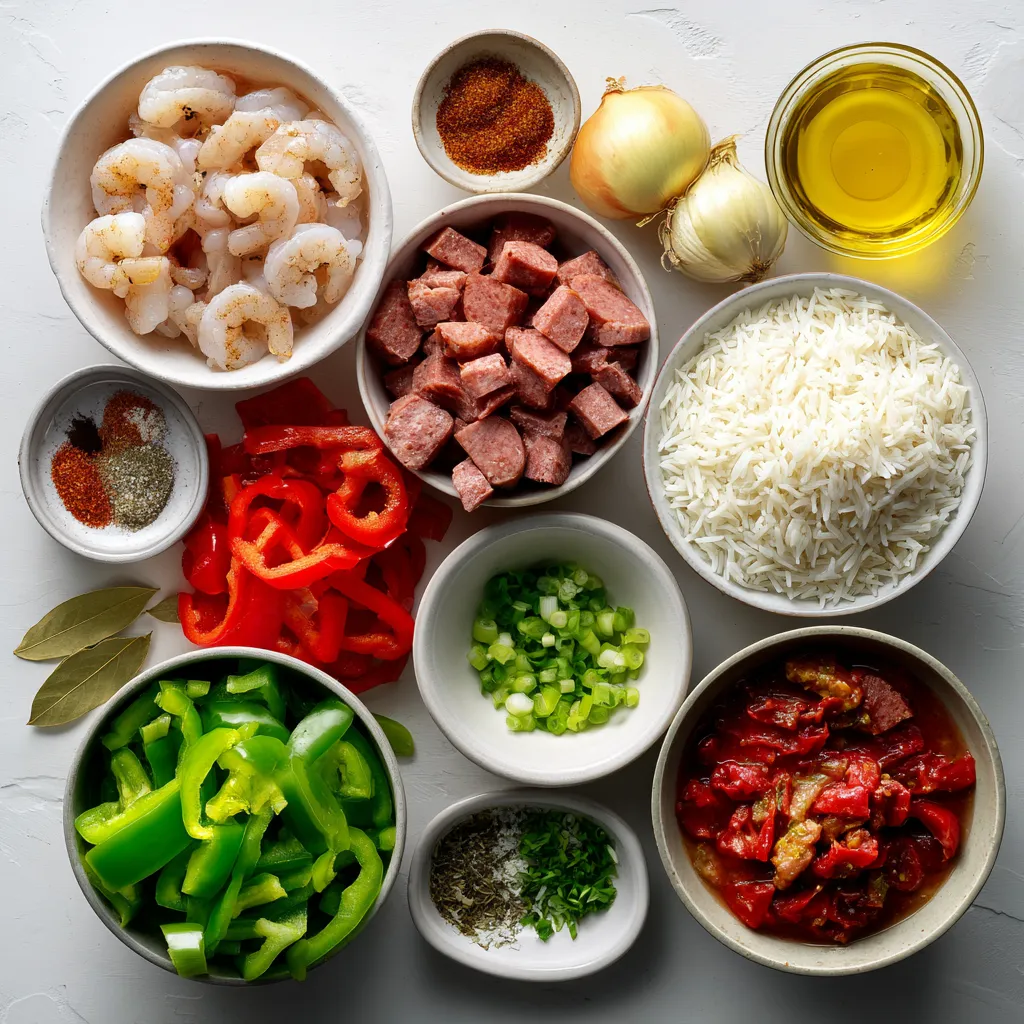
Step-by-Step Instructions
Preparing the Chicken and Sausage
Start by heating three tablespoons of vegetable oil in a large skillet over medium heat. When the oil is hot, add one pound of diced, boneless chicken thighs. Cook them for six to eight minutes until they turn brown on all sides. This step gives the chicken a nice flavor. Once done, take the chicken out and set it aside on a plate.
Next, add one and a half cups of sliced andouille sausage to the same skillet. Cook it for three to four minutes. You want it to brown and release its tasty oils. This adds depth to your jambalaya.
Sautéing the Vegetables
Now it’s time for the veggies! Toss in one large chopped onion, one diced green bell pepper, and one diced red bell pepper into the skillet with the sausage. Sauté these for about five minutes. You want the vegetables to get tender and flavorful. After that, stir in three minced garlic cloves. Cook for another minute until it smells amazing.
Cooking the Rice and Adding Shrimp
Next, return the browned chicken to the skillet. Add in one can of diced tomatoes (with juice), three cups of chicken broth, and two cups of rinsed long-grain rice. Sprinkle in two tablespoons of Cajun seasoning, one teaspoon of dried thyme, one teaspoon of smoked paprika, and two bay leaves. Mix everything well to combine.
Bring this mixture to a boil. Then, lower the heat and let it simmer. Cover the skillet with a lid and simmer for about 20 minutes. Stir occasionally to avoid sticking. When the rice is almost tender, it’s time to add one pound of peeled and deveined shrimp. Fold them gently into the mix and cover again. Cook for another five to seven minutes until the shrimp turn pink.
Final Seasoning and Serving Preparations
Once everything is cooked, take the skillet off the heat. Discard the bay leaves. Taste your jambalaya and add salt and black pepper as needed. Let it sit for about five minutes. This resting time helps the flavors blend.
When ready to serve, dish the jambalaya into deep bowls. Garnish with sliced green onions and fresh parsley for a pop of color. You can also enjoy it with crusty bread or cornbread on the side. Enjoy your delicious creation!
Tips & Tricks
Tips for Perfecting Your Jambalaya
– Use fresh ingredients for the best taste.
– Rinse your rice to remove excess starch. This helps keep the grains separate.
– Adjust the Cajun seasoning to match your spice level. Start light and add more.
– Let the jambalaya sit for a few minutes before serving. This melds the flavors.
– Use a large skillet or Dutch oven to allow for even cooking.
Common Mistakes to Avoid
– Don’t skip the browning step for the chicken and sausage. This adds flavor.
– Avoid overcooking the shrimp. They only need about 5-7 minutes to turn pink.
– Don’t add too much liquid at once. This can make the dish soupy.
– Skipping the bay leaves can rob your jambalaya of depth. Remember to remove them before serving.
– Don’t rush the simmering step. It’s key for the rice to cook properly.
Serving Suggestions and Pairings
– Serve your jambalaya in deep bowls for a hearty presentation.
– Garnish with green onions and parsley for color and freshness.
– Pair it with crusty bread or cornbread to soak up the flavors.
– A simple green salad can balance out the meal’s richness.
– For a drink, try a cold beer or sweet tea. Both complement the spice well.
Pro Tips
- Use Fresh Ingredients: Always opt for fresh vegetables and herbs to enhance the flavors of your jambalaya. Freshness can make a significant difference in the final taste.
- Customize the Spice Level: Adjust the Cajun seasoning according to your preference. If you like it spicier, consider adding some cayenne pepper or hot sauce for an extra kick.
- Let it Rest: Allowing the jambalaya to sit for a few minutes after cooking helps the flavors meld together and improves the overall taste.
- Add More Seafood: For a seafood lover’s twist, feel free to incorporate other seafood like mussels or crab alongside the shrimp for added depth and flavor.
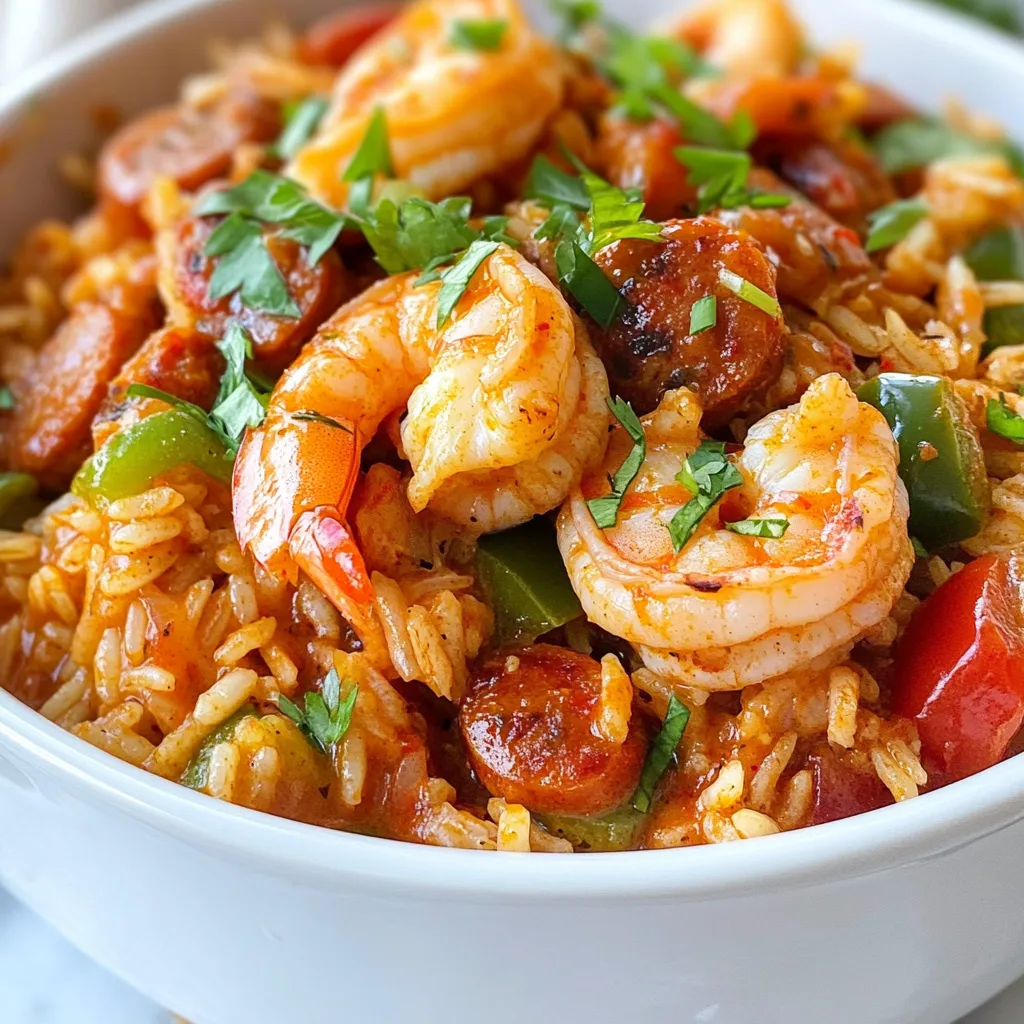
Variations
Seafood vs. Meat Jambalaya
You can choose seafood or meat for your jambalaya. Seafood jambalaya often features shrimp and fish. This version bursts with fresh ocean flavor. Meat jambalaya, on the other hand, usually includes chicken and sausage. Andouille sausage adds a spicy kick, which many love. Both options taste great and showcase the rich Cajun culture.
Vegetarian Cajun Jambalaya Options
Want a meat-free version? Try a vegetarian jambalaya! Use bell peppers, onions, and zucchini for a fresh taste. Add chickpeas or black beans for protein. Vegetable broth replaces chicken broth, giving it a rich flavor. You can even toss in some corn for sweetness. This dish still holds the essence of Cajun cooking.
Regional Variations of Jambalaya
Jambalaya changes from region to region. In Louisiana, you find the classic Creole style. This version often includes tomatoes and is more sauce-heavy. In contrast, the Cajun style is drier and uses no tomatoes. Some areas add different spices or ingredients. For instance, some folks enjoy adding okra for texture. Each region brings its twist to this beloved dish.
Storage Info
How to Properly Store Leftover Jambalaya
To store leftover jambalaya, wait for it to cool. Place it in an airtight container. Make sure to separate the rice and meat if possible. This helps keep everything fresh. Store it in the fridge for up to three days. If you want to keep it longer, freezing is a great option.
Reheating Tips for Optimal Flavor
When you reheat jambalaya, use the stove for the best taste. Add a splash of chicken broth to keep it moist. Heat it on low and stir often. You can also use a microwave. Cover it with a damp paper towel and heat in short bursts. Stir after each interval to avoid drying it out.
Freezing Jambalaya for Future Meals
To freeze jambalaya, let it cool completely. Portion it into freezer-safe bags. Squeeze out the air before sealing. Label the bags with the date. You can freeze them for up to three months. When ready to eat, thaw in the fridge overnight. Reheat on the stove or in the microwave. Enjoy your delicious meal anytime!
FAQs
What is the “Holy Trinity” in Cajun cooking?
The Holy Trinity in Cajun cooking is a mix of three key vegetables: onion, bell pepper, and celery. These ingredients form the base for many Cajun dishes, including jambalaya. They add depth and flavor to the dish. Using these three together gives your jambalaya that authentic taste.
Can I make jambalaya ahead of time?
Yes, you can make jambalaya ahead of time. In fact, it tastes even better the next day! Cook it fully, then cool it down. Store it in the fridge for up to three days. Reheat it gently on the stove. This makes meal prep easy and delicious.
What can I substitute for Andouille sausage?
If you can’t find Andouille sausage, you have options. You can use smoked sausage or kielbasa as a substitute. Both provide good flavor. For a lighter choice, turkey sausage works too. Just make sure to season well to keep that Cajun vibe.
How is jambalaya different from paella?
Jambalaya and paella are both rice dishes but have key differences. Jambalaya comes from Cajun and Creole culture in Louisiana. It is often spicier and uses a mix of meats and seafood. Paella hails from Spain and typically includes saffron and different seafood. The cooking methods also differ, with jambalaya being a one-pot dish.
Is jambalaya gluten-free?
Yes, jambalaya is generally gluten-free! The main ingredients, rice and meat, do not contain gluten. However, always check your Cajun seasoning and sausage to be sure. Some brands may add gluten or wheat.
In this post, I shared how to make authentic Cajun jambalaya. You learned about key ingredients, like chicken, sausage, and the Holy Trinity. I provided detailed steps for cooking and tips to avoid common mistakes. You can customize your dish with seafood or vegetarian options. Finally, I showed you how to store and reheat leftovers. Now, you have all the knowledge to make a tasty jambalaya that stands out at any meal. Enjoy your cookin
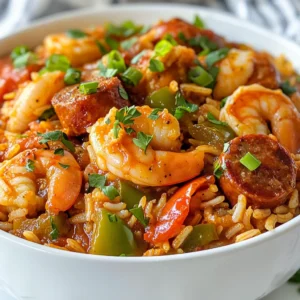
Spicy Cajun Jambalaya
Ingredients
- 1 lb boneless, skinless chicken thighs, diced into bite-sized pieces
- 1 lb shrimp, peeled and deveined
- 1.5 cups andouille sausage, sliced into rounds
- 1 large onion, finely chopped
- 1 medium green bell pepper, diced
- 1 medium red bell pepper, diced
- 3 cloves garlic, minced
- 1 can (14 oz) diced tomatoes with their juice
- 3 cups chicken broth (preferably low sodium)
- 2 cups long-grain rice, rinsed
- 2 tablespoons Cajun seasoning (adjust to taste)
- 1 teaspoon dried thyme
- 1 teaspoon smoked paprika
- 2 leaves bay leaves
- to taste salt and freshly ground black pepper
- 3 tablespoons vegetable oil
- 1/4 cup green onions, thinly sliced (for garnish)
- to taste fresh parsley, chopped (for garnish)
Instructions
- In a large skillet or Dutch oven, heat the vegetable oil over medium heat. Once hot, add the diced chicken thighs. Cook for about 6-8 minutes, stirring occasionally, until the chicken is browned on all sides. Remove the chicken from the skillet and set it aside on a plate.
- In the same skillet, add the sliced andouille sausage. Cook for 3-4 minutes until the sausage begins to brown and release its flavorful oils.
- Add the chopped onion, green bell pepper, and red bell pepper to the sausage in the skillet. Sauté the mixture for approximately 5 minutes, or until the vegetables are tender. Stir in the minced garlic and cook for an additional minute, or until fragrant.
- Return the browned chicken thighs to the skillet. Add in the diced tomatoes (with their juice), chicken broth, rinsed long-grain rice, Cajun seasoning, dried thyme, smoked paprika, and bay leaves. Mix everything together thoroughly.
- Bring the mixture to a boil, then lower the heat to a simmer. Cover the skillet with a lid and allow it to simmer for about 20 minutes, or until the rice is almost tender, stirring occasionally.
- Gently fold in the shrimp, ensuring they are evenly distributed. Cover the pot again and cook for an additional 5-7 minutes, or until the shrimp are pink and cooked through.
- Once cooked, remove the skillet from heat. Discard the bay leaves and taste the jambalaya. Adjust the seasoning with salt and freshly ground black pepper as needed.
- Allow the jambalaya to sit for about 5 minutes before serving, which helps the flavors meld together beautifully.


